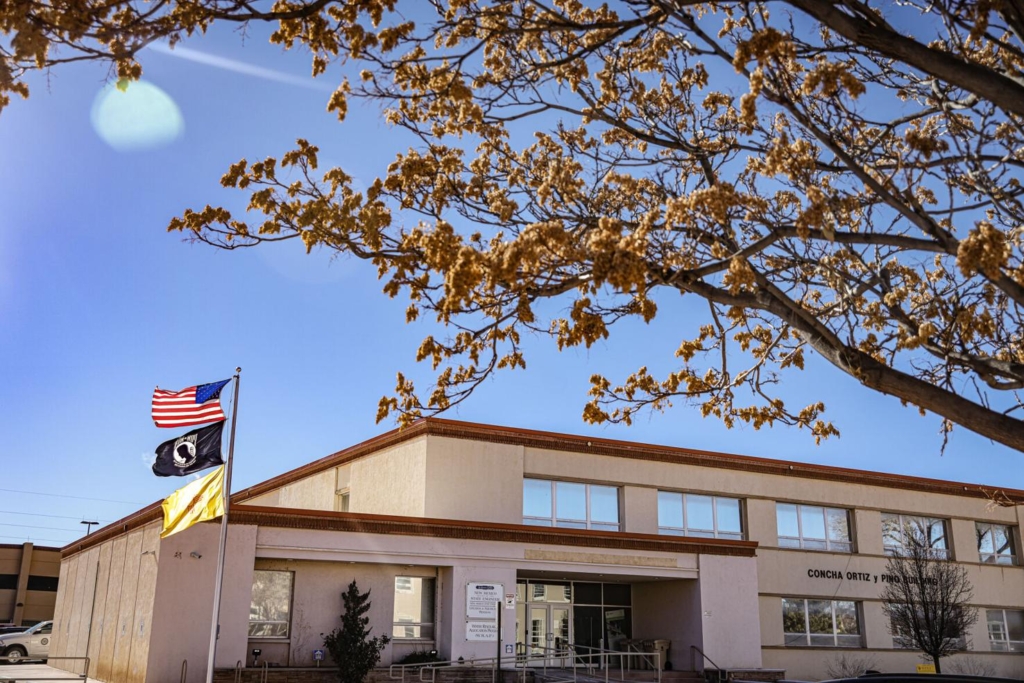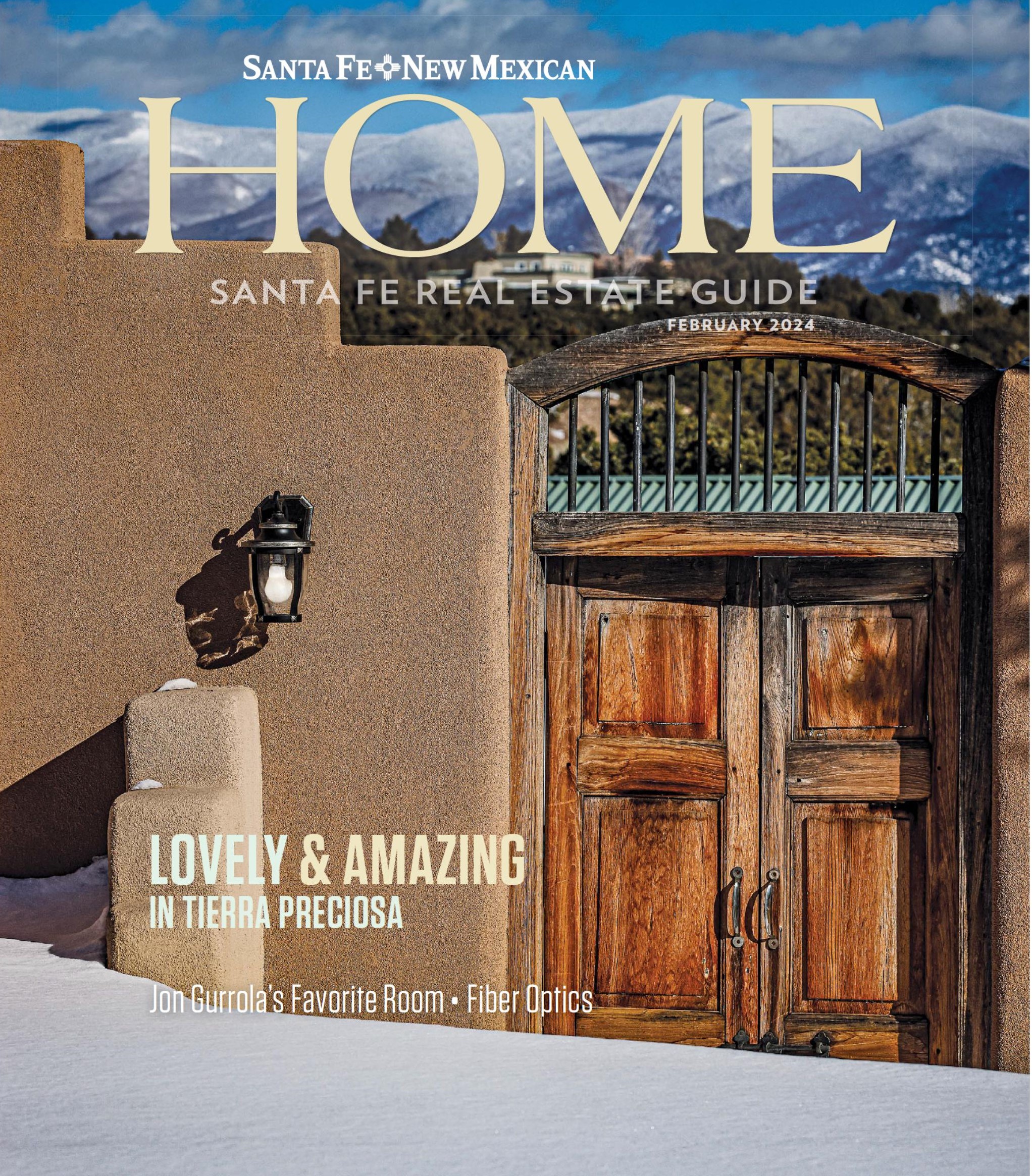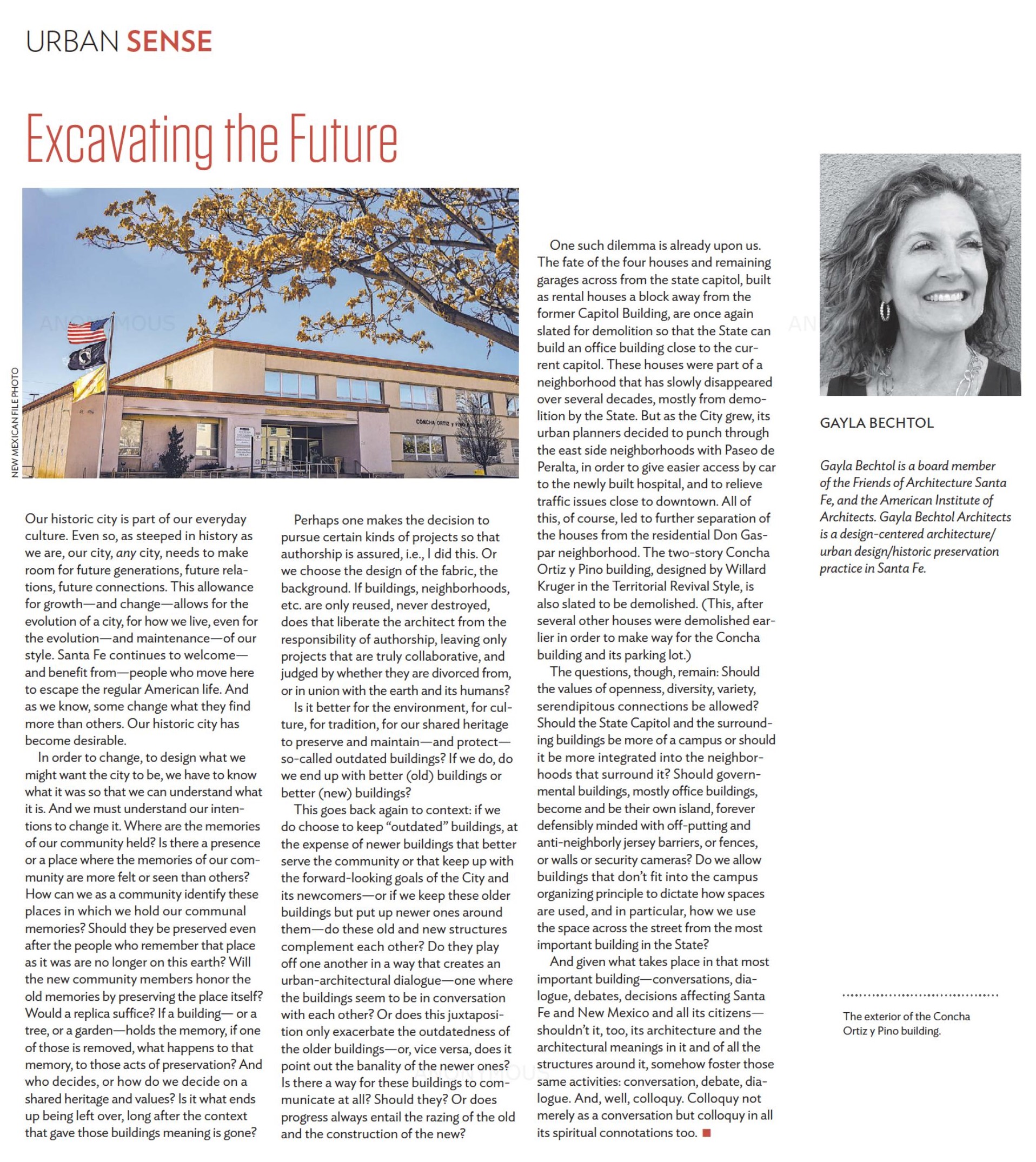In the February edition of The Santa Fe New Mexican’s Home Magazine, I reflect on the balance between preserving the historical essence of Santa Fe and accommodating growth and modern needs, emphasizing the importance of communal memory, the environmental and cultural impacts of maintaining old structures, and the potential for urban architectural dialogue between old and new buildings. Urban Sense.
Read the Article:
Our historic city is part of our everyday culture. Even so, as steeped in history as we are, our city, any city, needs to make room for future generations, future relations, future connections. This allowance for growth—and change—allows for the evolution of a city, for how we live, even for the evolution—and maintenance—of our style. Santa Fe continues to welcome—and benefit from—people who move here to escape the regular American life. And as we know, some change what they find more than others. Our historic city has become desirable.
In order to change, to design what we might want the city to be, we have to know what it was so that we can understand what it is. And we must understand our intentions to change it. Where are the memories of our community held? Is there a presence or a place where the memories of our community are more felt or seen than others? How can we as a community identify these places in which we hold our communal memories? Should they be preserved even after the people who remember that place as it was are no longer on this earth? Will the new community members honor the old memories by preserving the place itself? Would a replica suffice? If a building— or a tree, or a garden—holds the memory, if one of those is removed, what happens to that memory, to those acts of preservation? And who decides, or how do we decide on a shared heritage and values? Is it what ends up being left over, long after the context that gave those buildings meaning is gone?
Perhaps one makes the decision to pursue certain kinds of projects so that authorship is assured, i.e., I did this. Or we choose the design of the fabric, the background. If buildings, neighborhoods, etc. are only reused, never destroyed, does that liberate the architect from the responsibility of authorship, leaving only projects that are truly collaborative, and judged by whether they are divorced from, or in union with the earth and its humans?
Is it better for the environment, for culture, for tradition, for our shared heritage to preserve and maintain—and protect—so-called outdated buildings? If we do, do we end up with better (old) buildings or better (new) buildings?

The exterior of the Concha Ortiz y Pino building, which is named after a 1930s lawmaker who was an advocate for the arts and bilingual education.
This goes back again to context: if we do choose to keep “outdated” buildings, at the expense of newer buildings that better serve the community or that keep up with the forward-looking goals of the City and its newcomers—or if we keep these older buildings but put up newer ones around them—do these old and new structures complement each other? Do they play off one another in a way that creates an urban-architectural dialogue—one where the buildings seem to be in conversation with each other? Or does this juxtaposition only exacerbate the outdatedness of the older buildings—or, vice versa, does it point out the banality of the newer ones? Is there a way for these buildings to communicate at all? Should they? Or does progress always entail the razing of the old and the construction of the new?
One such dilemma is already upon us. The fate of the four houses and remaining garages across from the state capitol, built as rental houses a block away from the former Capitol Building, are once again slated for demolition so that the State can build an office building close to the current capitol. These houses were part of a neighborhood that has slowly disappeared over several decades, mostly from demolition by the State. But as the City grew, its urban planners decided to punch through the east side neighborhoods with Paseo de Peralta, in order to give easier access by car to the newly built hospital, and to relieve traffic issues close to downtown. All of this, of course, led to further separation of the houses from the residential Don Gaspar neighborhood. The two-story Concha Ortiz y Pino building, designed by Willard Kruger in the Territorial Revival Style, is also slated to be demolished. (This, after several other houses were demolished earlier in order to make way for the Concha building and its parking lot.)
The questions, though, remain: Should the values of openness, diversity, variety, serendipitous connections be allowed? Should the State Capitol and the surrounding buildings be more of a campus or should it be more integrated into the neighborhoods that surround it? Should governmental buildings, mostly office buildings, become and be their own island, forever defensibly minded with off-putting and anti-neighborly jersey barriers, or fences, or walls or security cameras? Do we allow buildings that don’t fit into the campus organizing principle to dictate how spaces are used, and in particular, how we use the space across the street from the most important building in the State?
And given what takes place in that most important building—conversations, dialogue, debates, decisions affecting Santa Fe and New Mexico and all its citizens—shouldn’t it, too, its architecture and the architectural meanings in it and of all the structures around it, somehow foster those same activities: conversation, debate, dialogue. And, well, colloquy. Colloquy not merely as a conversation but colloquy in all its spiritual connotations too.


